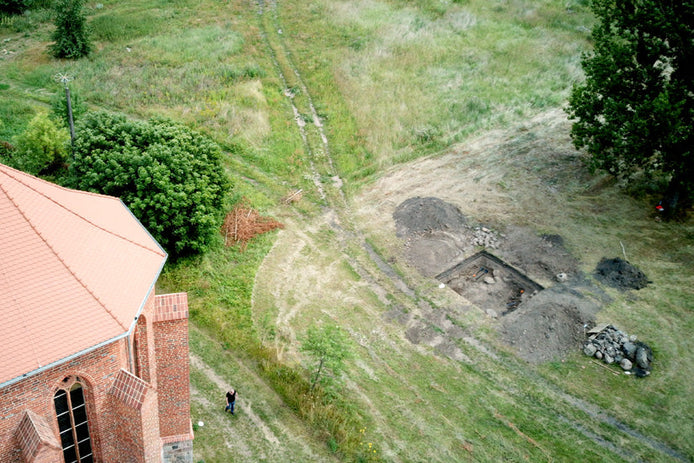The Amber Room: History, Mystery and the Search for a Lost Masterpiece
The Amber Room is one of the most captivating lost treasures of the modern era, combining artistic brilliance, political symbolism and wartime disappearance into a single unresolved mystery. Often called the “Eighth Wonder of the World,” the room was crafted from tons of carved amber, gold leaf and intricate mosaics. Its brilliance fascinated monarchs, diplomats and scholars for centuries, turning it into a symbol of opulence and international prestige. When it vanished during World War Two, it transformed from a cultural masterpiece into one of the greatest treasure mysteries in history. The unanswered questions surrounding its fate continue to inspire research, speculation and global intrigue.
Origins of a Prussian Masterpiece
The Amber Room was created in the early eighteenth century in Prussia, during a period in which European courts competed for artistic and architectural grandeur. Designed by German and Danish craftsmen, the room featured wall panels made entirely of precious amber intricately carved and illuminated by gold and mirrors. Contemporary accounts describe its glow as “like captured sunlight,” making it an unforgettable spectacle for any visitor. In 1716, the Prussian King Frederick William I gifted the room to Tsar Peter the Great as part of a strategic alliance, transforming it into one of the most extraordinary diplomatic gifts ever exchanged. Installed in the Catherine Palace near Saint Petersburg, it quickly became a cultural centerpiece of the Russian Empire.
Wartime Seizure and Disappearance
When Nazi Germany launched Operation Barbarossa in 1941, art theft became a central part of the occupation strategy, and the Amber Room was a prime target. Museum staff attempted to dismantle and hide it, but the fragile panels were too brittle to move without risk of damage. As a result, German troops removed it carefully, packed it into crates and transported it to Königsberg Castle in East Prussia. There, the room was reassembled and placed on public display, becoming a propaganda symbol of German conquest. As Allied forces advanced in 1944, the room was dismantled again and stored in crates—its last confirmed sighting. After that point, the historical trail grows cold, leaving only fragments of testimony and speculation.
The disappearance of the Amber Room has triggered countless theories. Some historians believe it was destroyed when Königsberg Castle burned during Allied bombing raids. Others argue it was evacuated shortly before the fire and hidden in underground bunkers, salt mines or forest tunnels across Germany, Poland or Lithuania. Maritime theories suggest that crates may have been loaded onto a submarine or transport ship that later sank in the Baltic Sea. With no physical evidence recovered, each possibility remains open, fueling generations of investigation and debate.

Source: Андрей Андреевич Зеест, Public domain, via Wikimedia Commons
Search Efforts and Modern Investigations
Since the end of the war, governments, researchers and independent treasure hunters have conducted extensive searches for the Amber Room. Excavations took place in former Nazi bunkers, underground tunnels and collapsed mines, often based on witness reports or recovered documents. Some investigations uncovered crates, hidden chambers or wartime relics but no amber panels. Declassified intelligence files provided new leads, yet none conclusively pinpointed the room’s final location. The lack of hard evidence has made the Amber Room one of the most challenging treasure hunts in history.
Modern research methods have revitalized the search. Ground-penetrating radar, 3D scanners and advanced metal-detection technologies now allow teams to investigate deep underground structures with far greater precision than past explorers. While these tools have revealed promising anomalies in certain locations, none have yet yielded the missing amber panels. Even so, every search contributes valuable information about wartime logistics, regional geology and the movement of cultural assets during the conflict. The investigation has become as much a study of history as a treasure hunt.
Cultural Significance and Lasting Fascination
The Amber Room’s significance extends far beyond its material value. It represents a fusion of European craftsmanship, royal diplomacy and cultural identity across two empires. For Russia, it became a symbol of imperial heritage and artistic achievement; for Germany, its disappearance remains tied to the complex legacy of wartime theft. In the decades since the war, the mystery has influenced books, films and documentaries, ensuring its presence in global culture. In 2003, a full reconstruction of the Amber Room was completed in the Catherine Palace, allowing visitors to experience its splendor, even if the original remains missing. The reconstruction stands as both a tribute to the artisans who built it and a reminder of the unresolved puzzle that still inspires worldwide curiosity.
Frequently Asked Questions
Is there any confirmed evidence of the Amber Room’s survival?
No. All confirmed records end in 1944 when the room was stored in crates in Königsberg. After that, its fate remains unknown.
Could the Amber Room have been destroyed in the war?
Yes, one theory suggests it was destroyed during the 1944 fire in Königsberg Castle, but no physical remains have ever been found.
Why is the Amber Room considered so valuable?
Its value lies in its craftsmanship, historical significance and the sheer amount of amber and gold used in its creation.
Where do researchers believe it might be today?
Potential locations include underground bunkers, collapsed mines, hidden tunnels or shipwrecks in the Baltic Sea.
Is the search still active?
Yes. Modern technology and newly released archival information continue to inspire new investigations.


